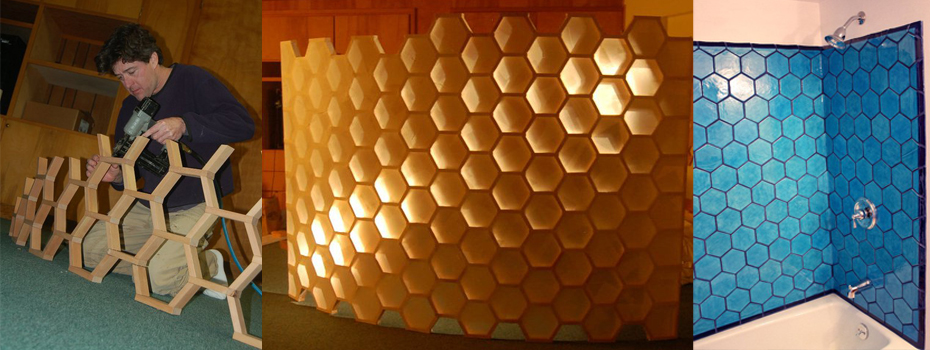Scott Balcom, Paradigm Innovators, and the Application of Non-linear Building Techniques
Scott Balcom operates Paradigm Innovators, a company specializing in non-linear design and biomimicry concepts that allow the building of complex and simple structures through the use of as few as one repeating piece. As a master carpenter / builder with thirty years of hands on experience, Scott knows all of the old paradigm’s ways in framing and finish from mansions to modest dwellings, standard stick frame to the most complex roofs, and production framing to timber frame; now he is applying his skills to create something totally new.
SCOTT’S STATEMENT ABOUT HIS EXPERIENCE AND SUSTAINABLE BUILDING
I have worked with adobe, rammed earth, foam block and for five years I built strawbale homes in Tucson Arizona (1994-1999). I framed one of the very first permitted strawbale houses in the country, which started a five-year run with builder John Woodin, in which we were the go-to crew for those who wanted to build with straw but knew that they needed help.
Details and discussions about that first house (The Pam Tillman house) appear in “The Straw Bale House” by Athena and Bill Steen, and pictures of the Tillman house and the Julie Harding house appear in “The Beauty of Straw Bale Homes” also by the Steen’s. John was the contractor and gets credit for these homes in the latter book but by the time we got to the Harding residence I was responsible for all of the day to day decisions for actually building the houses.
With every straw bale house we built, I would receive the plans and see things that had gone past the architect (or designer), engineer and plan check that I knew either could not be built or that needed to be modified. Sometimes I would engage the city or county, the designer and engineer to get them “on board” and sometimes I would just make the necessary changes without their input.
During this process I saw that even though some of the houses we built were load bearing we still ended up using a lot of wood.
Since moving to Ashland, OR I have watched as codes have become even more ridiculous and the requirements to build have become less sustainable.
I have also watched as people with good intensions have cloaked themselves as “green” and “sustainable” but the true advancement that they have made is very small because they are working with a minor modification to the old paradigm, or worse, bending these definitions to suit their monetary goals.
For me, one of the main issues remains the perpendicular paradigm itself. Nature builds efficiently and often builds round, but if you ask any contractor to build you a round house they will tell you that it will cost two to three times more than a “normal” house, why?
I pondered this question for years with very little traction. When the bottom fell out of the housing market I started working on my own house. I made hexagon tiles for my shower that had a continuous layout. This means there are no cuts and where the tile is half on one wall and half on the other I made the tiles bent. Working on this non-linear project gave me insight to a whole different way of building. Since then, I have spent the last few years working on these “Non-linear Building Techniques”, including the last ten months of a yearlong sabbatical. During this time I have dedicated myself to developing and implementing techniques that allow the building of complex and simple structures through the use of as few as one repeating piece.
When you can build with short pieces that are all the same, or two or three varieties of shot pieces you can build nearly anything out of anything (nothing is more sustainable than that).
Details on Scott’s current work and designs are forth coming, in the meantime you can contact Scott by e-mail for more information: [email protected]


